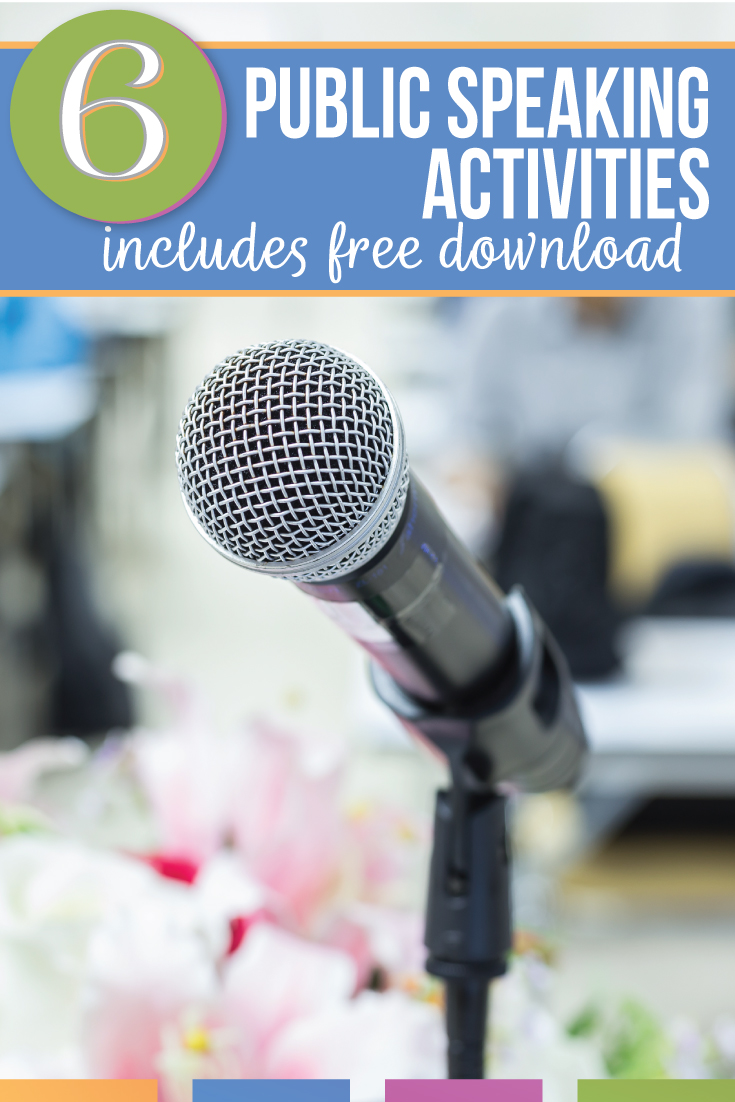What is the Role of the Teacher in the Speaking Class?
The role of the teacher in the speaking class is to facilitate effective communication and provide guidance to students.

Credit: www.syracuse.edu
Understanding The Role Of The Teacher
The role of the teacher in a speaking class is crucial for facilitating effective communication and language development. Teachers create a supportive and engaging environment, provide guidance and feedback, and encourage students to practice their speaking skills confidently.
In a speaking class, the role of the teacher is crucial in guiding and supporting students in their language development journey. The teacher plays multiple roles to ensure effective communication and create a supportive learning environment. By understanding these roles, teachers can maximize their impact on students’ speaking skills. Let’s explore two key aspects of the teacher’s role in the speaking class: Facilitating Effective Communication and Creating a Supportive Learning Environment.
Facilitating Effective Communication
The teacher’s primary responsibility in a speaking class is to facilitate effective communication among the students. This involves providing ample opportunities for speaking practice, organizing activities that encourage meaningful interactions, and promoting the use of target language. By designing stimulating tasks and guiding students through them, the teacher assists learners in improving their speaking fluency, accuracy, and overall communication skills.
- Design activities that encourage pair or small group discussions, debates, and presentations.
- Arrange opportunities for students to engage in real-life conversations, such as role-plays or simulations.
- Offer feedback and corrections to help students improve their pronunciation, grammar, and vocabulary usage.
Creating A Supportive Learning Environment
In addition to facilitating effective communication, the teacher must also create a supportive learning environment that nurtures students’ confidence and motivation to speak. It is essential to establish a safe and inclusive space where individuals feel comfortable expressing themselves and making mistakes. Here are some strategies for creating such an environment:
- Encourage participation by praising students’ efforts and providing constructive feedback.
- Promote a non-judgmental atmosphere where everyone’s ideas and opinions are valued.
- Foster collaboration and teamwork through group activities and peer-to-peer interactions.
- Design engaging and culturally diverse content to cater to students’ interests and backgrounds.
Planning And Preparation
When it comes to teaching speaking skills, planning and preparation play a crucial role in creating an effective and engaging learning environment. Teachers need to carefully consider and structure their lessons to ensure that students have a clear understanding of the learning objectives and are provided with engaging activities that promote speaking and communication.
Setting Clear Learning Objectives
Setting clear learning objectives is the first step in planning a successful speaking class. These objectives guide the teacher in determining what specific skills and language areas they want their students to develop. By clearly defining these objectives, teachers can then design relevant and meaningful activities that will help students achieve the desired outcomes.
In order to set clear learning objectives for a speaking class, teachers should consider the following:
- The specific speaking skills they want students to develop, such as fluency, accuracy, pronunciation, or intonation.
- The language areas they want students to focus on, such as vocabulary related to a specific topic or grammar structures that support effective communication.
- The overall goals of the speaking class, which may include improving confidence, promoting teamwork, or enhancing critical thinking skills.
Developing Engaging Lesson Plans
Once the learning objectives have been established, the next step is to develop engaging lesson plans that provide opportunities for students to practice and refine their speaking skills. An effective lesson plan should include a variety of activities that cater to different learning styles and promote active participation.
In order to develop engaging lesson plans for a speaking class, teachers should consider the following:
- Start the lesson with a warm-up activity that activates students’ prior knowledge or introduces the main topic of the class.
- Include pair or group work activities that encourage interaction and collaboration among students.
- Incorporate real-life scenarios or authentic materials that allow students to apply their speaking skills in practical situations.
- Provide clear instructions and modeling to ensure that students understand the task and know what is expected of them.
- Include opportunities for feedback and reflection, allowing students to evaluate their own performance and learn from their mistakes.
By carefully planning and preparing each speaking class, teachers can create a positive and engaging learning experience that enhances their students’ speaking skills and fosters effective communication.
Teaching Speaking Skills
When it comes to language learning, speaking skills play a crucial role in effective communication. As a language teacher, your role in the speaking class goes beyond simply transferring knowledge. Your main objective is to guide your students to develop their speaking abilities and become confident and fluent speakers. In this section, we will explore three key aspects of teaching speaking skills: understanding the speaking process, teaching speaking strategies, and providing feedback and correction.
Understanding The Speaking Process
To effectively teach speaking skills, it is essential to have a deep understanding of the speaking process. By familiarizing yourself with the intricacies of this process, you will be better equipped to assist your students in their language learning journey.
The speaking process involves various stages, such as:
- Decoding the message: Understanding and interpreting the given information.
- Formulating a response: Organizing thoughts and generating appropriate language structures.
- Articulating and delivering the response: Conveying the message using appropriate pronunciation, intonation, and body language.
By being aware of these stages, you can tailor your teaching approach to address specific challenges your students may face during each stage.
Teaching Speaking Strategies
Equipping your students with effective speaking strategies is crucial for their development as confident speakers. By imparting these strategies, you empower them to overcome communication barriers and improve their overall speaking proficiency.
Here are some effective strategies to consider teaching:
- Building vocabulary: Encouraging students to expand their vocabulary repertoire helps them express themselves more precisely.
- Developing fluency: Providing opportunities for regular practice through engaging speaking activities improves fluency and enhances conversational skills.
- Using communication strategies: Teaching students techniques like paraphrasing, asking for clarification, and predicting content can help them navigate conversations more effectively.
By incorporating these strategies into your lesson plans, you enable your students to develop the confidence and skills needed to communicate fluently in real-life situations.
Providing Feedback And Correction
Effective feedback and correction are invaluable in the language learning process. As a teacher, your feedback should focus on guiding your students towards improvement rather than dwelling on mistakes.
Consider the following approaches:
- Positive reinforcement: Acknowledge and praise your students’ efforts and achievements, building their confidence and motivation.
- Targeted corrective feedback: Highlight specific areas of improvement while providing clear explanations and examples to help students understand and rectify their mistakes.
- Pronunciation guidance: Pay attention to pronunciation errors and provide guidance, using methods such as modeling correct pronunciation, phonetic drills, and providing audio resources.
By adopting a balanced approach to feedback and correction, you create a supportive learning environment that encourages progress and fosters continuous improvement.

Credit: www.semanticscholar.org
Promoting Active Student Participation
In the speaking class, the role of the teacher is not just to deliver information, but to create an environment where students actively participate and engage in speaking activities. By promoting active student participation, teachers can foster a dynamic and immersive learning experience. This involves encouraging speaking opportunities, implementing pair and group activities, and fostering a safe and inclusive classroom.
Encouraging Speaking Opportunities
One effective way for teachers to promote active student participation in the speaking class is by encouraging speaking opportunities. Students should feel empowered and confident to express their thoughts and ideas in the target language. This can be achieved through various strategies:
- Provide open-ended questions that require longer responses, encouraging students to elaborate on their answers.
- Give students the chance to share personal experiences or opinions related to the topic being discussed.
- Create a supportive atmosphere by actively listening to students and providing positive feedback on their speaking skills.
- Offer opportunities for students to present short speeches or lead class discussions, allowing them to take ownership of their learning.
Implementing Pair And Group Activities
Pair and group activities are valuable tools for promoting active student participation in the speaking class. These activities encourage collaboration, interaction, and peer learning. Here are some effective ways teachers can implement pair and group activities:
- Assign speaking tasks that require students to work together, such as role-plays, debates, or problem-solving activities.
- Ensure equal participation by assigning roles within pairs or groups, such as a leader, timekeeper, note-taker, or spokesperson.
- Provide clear instructions and guidelines to help students effectively complete the activity.
- Monitor and facilitate the activities, offering support and guidance when needed.
- Encourage active listening and respectful communication among students.
Fostering A Safe And Inclusive Classroom
A safe and inclusive classroom environment is crucial for promoting active student participation in the speaking class. Students need to feel comfortable and respected in order to freely express themselves. Here are some approaches teachers can adopt:
- Create a welcoming atmosphere by learning students’ names, showing genuine interest in their lives, and acknowledging their unique experiences.
- Establish clear expectations for behavior and treat all students with fairness and equity.
- Encourage a supportive and non-judgmental classroom culture, where mistakes are viewed as opportunities for learning and growth.
- Address any instances of bullying, discrimination, or exclusion promptly and firmly.
- Promote cultural sensitivity and embrace diversity through discussions and activities that celebrate different languages, cultures, and perspectives.
Assessment And Evaluation
The teacher plays a crucial role in the speaking class by guiding and facilitating student learning, providing feedback, and assessing their speaking skills. By creating a supportive and interactive environment, the teacher empowers students to improve their speaking abilities and gain confidence in expressing themselves orally.
As a teacher in the speaking class, the role of assessment and evaluation is crucial in determining the progress of your students. Through thoughtful assessment methods and providing constructive feedback, you can guide and support their language development effectively. Let’s explore the importance of these aspects in more detail.Using Various Assessment Methods
Assessing students’ speaking skills requires a diverse range of methods to capture their abilities accurately. While traditional exams have their place, it’s essential to incorporate alternate assessment techniques. These can include: – Role-playing activities – Group discussions – Oral presentations – Debates Using a combination of these methods not only provides a comprehensive evaluation but also keeps the class engaging and dynamic. Students can demonstrate their speaking skills in various contexts, enabling you to assess their progress more effectively.Providing Constructive Feedback
Constructive feedback is essential to guide students towards improvement in their speaking abilities. When providing feedback, focus on specific areas that require development. Provide examples and suggestions for improvement, emphasizing the positive aspects of their performance. Here are some tips for giving constructive feedback: – Be specific and avoid vague statements – Encourage students to self-reflect on their strengths and areas for improvement – Offer guidance on pronunciation, vocabulary usage, and fluency – Provide opportunities for students to practice and apply the feedback in subsequent speaking activities By consistently providing constructive feedback, you empower students to enhance their speaking skills and build confidence in expressing themselves in a foreign language. In conclusion, assessment and evaluation play, a pivotal role in the speaking class. Implementing various assessment methods and providing constructive feedback ensures that students are evaluated comprehensively and receive guidance for improvement. By doing so, as a teacher, you create a supportive and effective learning environment where students can develop their speaking skills to their fullest potential.
Credit: www.indeed.com
Frequently Asked Questions On What Is The Role Of The Teacher In The Speaking Class?
What Is The Role Of Teachers In Teaching Speaking Skills To Children?
Teachers play a crucial role in teaching speaking skills to children. They provide guidance, create a supportive atmosphere, encourage participation, and provide opportunities for practice. By using interactive activities, appropriate resources, and effective feedback, teachers help children develop confidence and fluency in speaking.
What Should Teachers Do During Speaking Activities?
During speaking activities, teachers should create a supportive and engaging environment. They should encourage students to actively participate, provide clear instructions, and monitor conversations to ensure accuracy and fluency. Additionally, teachers can give constructive feedback, encourage peer interactions, and use various teaching aids and materials to enhance the learning experience.
What Is The Role Of The Teacher In The Classroom Communication?
The teacher plays a crucial role in classroom communication, facilitating interaction and ensuring effective learning. They deliver information clearly, encourage student participation, and foster a positive classroom environment. Through active listening and effective feedback, teachers promote understanding, knowledge retention, and successful communication among all students.
How Can A Teacher Teach Speaking Skills?
A teacher can teach speaking skills by providing opportunities for students to engage in conversations, practicing pronunciation and intonation, using role plays and group discussions, giving feedback on grammar and vocabulary, and encouraging fluency through regular speaking activities.
Conclusion
To sum up, the role of the teacher in the speaking class is crucial. They create a supportive environment, provide guidance, and encourage active participation. By incorporating various teaching techniques and resources, teachers empower students to enhance their speaking skills.
Through continuous feedback and opportunities for practice, instructors play a pivotal role in fostering confidence and fluency in the language. Ultimately, the teacher’s role is to facilitate effective communication and enable students to reach their full potential in the speaking class.

